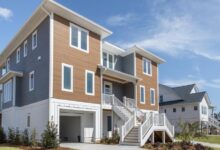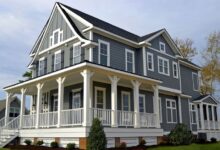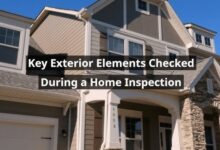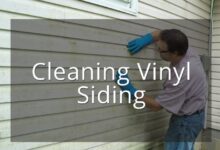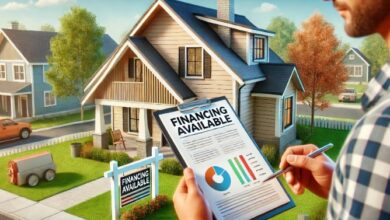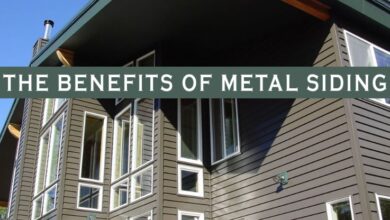Best Siding for Storm Protection: Top 5 Products to Safeguard Your Home from Extreme Weather
When it comes to safeguarding your home from the unpredictable nature of storms, choosing the right siding for storm protection is crucial. Not only does it enhance your home’s curb appeal, but it also plays a vital role in shielding your property from wind, rain, and debris. In this article, we’ll explore the top products for storm-resistant siding, their benefits, and help you make an informed decision on how to protect your home with superior materials.
What is Siding for Storm Protection?
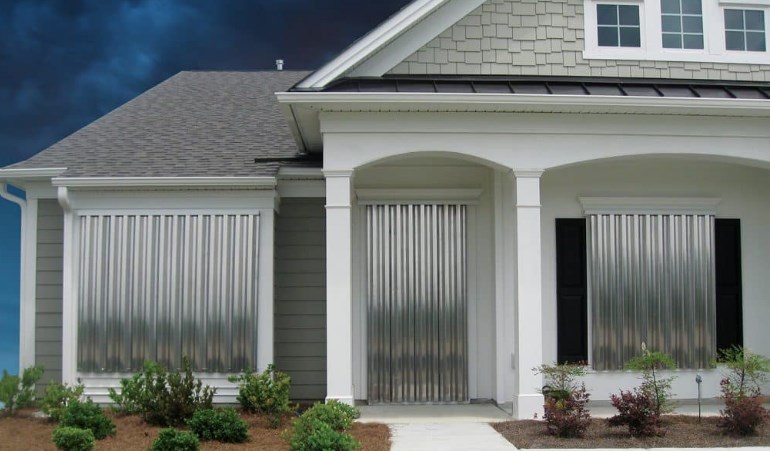
Siding for storm protection refers to materials specifically designed to withstand the forces of nature during severe weather events. These siding types are engineered to resist high winds, flying debris, and heavy rainfall, which are common during storms and hurricanes. When you choose the right siding, you are not only protecting your home’s structure but also ensuring your family’s safety and minimizing damage costs.
Why Do You Need Storm-Resistant Siding?
Storms can be unpredictable and devastating. Standard siding may not hold up under the pressure of high winds or extreme weather. Here are some of the reasons why investing in storm-resistant siding is crucial:
- Wind Resistance: Certain siding materials are designed to withstand high-speed winds of up to 150 mph or more.
- Moisture Protection: Storms bring heavy rain and flooding; durable siding can prevent water from seeping into your home.
- Debris Protection: Flying debris can break or puncture weak siding. Storm-resistant materials are tougher and offer more resilience.
- Enhanced Safety: Storm-proof siding helps maintain the structural integrity of your home, offering a safer shelter during extreme weather events.
Top 5 Siding Options for Storm Protection

Here are five of the best storm-resistant siding options to consider, along with their pros, cons, features, and prices.
1. James Hardie Fiber Cement Siding
Website: James Hardie Fiber Cement Siding
Features:
- Made from a durable mix of cement, sand, and cellulose fibers.
- Offers exceptional resistance to wind, rain, and hail.
- Fire-resistant, rot-resistant, and can withstand extreme temperatures.
Pros:
- High durability against severe weather.
- Low maintenance and long-lasting.
- Available in various styles and colors for aesthetic flexibility.
Cons:
- Can be more expensive than traditional wood siding.
- Requires professional installation.
Price: $7-$10 per square foot.
Use Case: James Hardie is perfect for homeowners in hurricane-prone or storm-heavy regions. It ensures protection from flying debris and heavy winds.
2. LP SmartSide Engineered Wood Siding
Website: LP SmartSide Engineered Wood Siding
Features:
- Manufactured with a resin-infused technology for enhanced durability.
- Resists cracking, warping, and termites.
- Available in a variety of textures, colors, and finishes.
Pros:
- Affordable yet durable.
- Simple installation process.
- Resists moisture, making it ideal for storm-prone areas.
Cons:
- Requires periodic maintenance (painting or staining).
- Not as fire-resistant as fiber cement siding.
Price: $3-$7 per square foot.
Use Case: LP SmartSide is great for homeowners looking for a balance of cost and storm protection. It’s ideal for areas prone to wind and rain.
3. Mastic Vinyl Siding
Website: Mastic Vinyl Siding
Features:
- Engineered to withstand winds up to 220 mph.
- Highly resistant to water absorption.
- Easy to maintain and clean.
Pros:
- Affordable and budget-friendly.
- Highly resistant to fading and warping.
- Low maintenance and long-lasting.
Cons:
- May crack in extremely cold temperatures.
- Not as eco-friendly as other siding materials.
Price: $4-$6 per square foot.
Use Case: Mastic Vinyl is perfect for homeowners in areas with extreme weather conditions, offering long-lasting protection with minimal upkeep.
4. CertainTeed CedarBoards Insulated Vinyl Siding
Website: CertainTeed CedarBoards Insulated Vinyl Siding
Features:
- Insulated for enhanced energy efficiency.
- Built to resist extreme weather conditions, including hurricanes.
- Made with a durable vinyl surface for better performance.
Pros:
- Energy-efficient and cost-effective.
- Strong and durable in storm conditions.
- Offers superior noise reduction.
Cons:
- Slightly higher cost than traditional vinyl siding.
- Limited aesthetic options.
Price: $6-$8 per square foot.
Use Case: Ideal for homeowners looking for energy savings as well as storm protection. Provides an extra layer of insulation against both severe weather and high utility bills.
5. Royal Building Products StormMax Siding
Website: Royal Building Products StormMax Siding
Features:
- Extra thick vinyl construction for greater wind resistance.
- Available in a wide variety of colors and styles.
- Advanced UV protection to resist fading.
Pros:
- Strong wind and rain resistance.
- Easy to maintain and clean.
- Affordable option for storm protection.
Cons:
- Less durable than fiber cement in terms of impact resistance.
- Requires professional installation for best results.
Price: $5-$9 per square foot.
Use Case: StormMax is a great choice for those on a budget who still need effective storm protection. Its weather-resistant properties make it a solid choice for homeowners in high-risk areas.
Comparison Table: Siding Options for Storm Protection
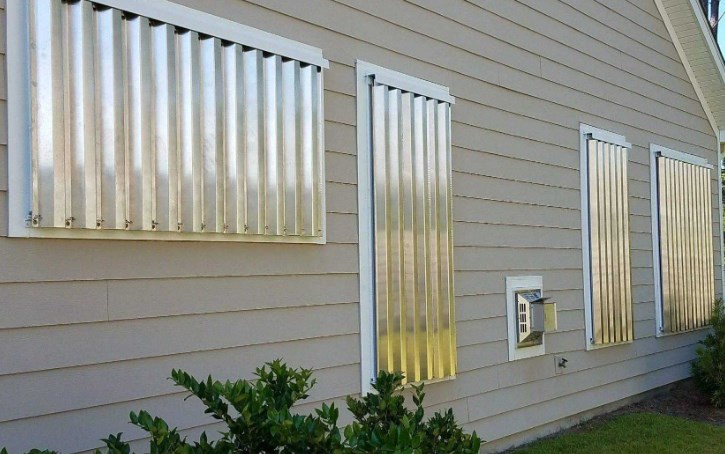
| Product | Use Case | Pros | Cons | Price Range | Features |
|---|---|---|---|---|---|
| James Hardie Fiber Cement | Ideal for hurricane-prone areas | Durable, low maintenance | Expensive, requires professional install | $7-$10 per sq ft | Fire-resistant, wind-resistant, long-lasting |
| LP SmartSide | Budget-friendly option | Affordable, simple installation | Needs maintenance (painting) | $3-$7 per sq ft | Resists moisture and termites, durable |
| Mastic Vinyl Siding | Extreme weather protection | Affordable, low maintenance | May crack in cold temps | $4-$6 per sq ft | Resists fading, easy to clean |
| CertainTeed CedarBoards | Energy-efficient and stormproof | Energy-efficient, strong against storms | Higher cost than traditional vinyl | $6-$8 per sq ft | Insulated, noise reduction |
| Royal StormMax | Budget-conscious homeowners | Affordable, resistant to wind/rain | Less impact-resistant than fiber cement | $5-$9 per sq ft | UV protection, wide color range |
Where to Buy Siding for Storm Protection
When it comes to purchasing siding for storm protection, there are several options available depending on your preferences for shopping online, visiting a local store, or working with contractors directly. Below are the best ways to buy storm-resistant siding, including both direct-to-consumer manufacturers and trusted retailers:
1. Directly from the Manufacturer
Buying from the manufacturer’s website is often the best option for purchasing high-quality, storm-resistant siding. You can get detailed product information, warranties, and even locate local dealers near you. Here are a few reliable manufacturers you can check:
- James Hardie Fiber Cement Siding
- How to Buy: Visit James Hardie’s official website to get a quote or locate a supplier near you. They offer free consultations and can help connect you with certified contractors for installation.
- LP SmartSide Engineered Wood Siding
- How to Buy: You can purchase LP SmartSide products through their website, or find local distributors that carry it. They also have resources to help you find professional installers.
- Mastic Vinyl Siding
- How to Buy: Mastic offers a dealer locator tool on their website to help you find a supplier nearby. Additionally, they offer online support to help you choose the best product for your needs.
- CertainTeed CedarBoards Insulated Vinyl Siding
- How to Buy: Visit CertainTeed’s website for product details and a store locator. They also offer online ordering through their authorized dealers.
- Royal Building Products StormMax
- How to Buy: You can buy Royal’s StormMax siding directly from their website or check for local suppliers. They also provide information on professional installers.
2. Home Improvement Retailers
Big-box home improvement stores often carry a selection of storm-resistant siding products. These are great for DIYers or homeowners looking to compare multiple brands in one place.
- Home Depot
- How to Buy: Home Depot offers a wide range of storm-resistant siding, including vinyl, fiber cement, and engineered wood options. You can shop online, select local store pickup, or get delivery straight to your home.
- Lowe’s
- How to Buy: Lowe’s offers a selection of Mastic Vinyl, CertainTeed, and other storm-resistant siding materials. You can order online and choose between home delivery or store pickup.
- Menards
- How to Buy: Menards carries various siding products with detailed descriptions, customer reviews, and pricing. It’s a convenient place for purchasing siding materials and related accessories.
3. Specialized Building Supply Stores
For more specialized products or unique styles of storm-resistant siding, consider shopping at local building supply stores that cater specifically to contractors and home improvement projects. These stores often have a wider selection of high-quality siding brands that are harder to find at larger chain retailers.
- ABC Supply Co.
- How to Buy: ABC Supply is one of the largest suppliers of siding materials in the U.S., with a focus on storm-resistant options. You can find locations near you or buy directly from their website.
- BMC Building Materials
- How to Buy: BMC offers a wide variety of siding options including premium storm-resistant products. They offer both in-store shopping and delivery options for contractors and homeowners.
4. Amazon and Other Online Marketplaces
If you’re looking for convenience and potentially discounted prices, Amazon and other online marketplaces are great places to shop for siding products.
- Amazon
- How to Buy: Search for the storm-resistant siding brands you’re interested in (such as Mastic, Royal, etc.) and compare prices, reviews, and shipping options. Amazon also frequently offers bulk purchase options for larger projects.
- eBay
- How to Buy: eBay is another option where you can find siding materials from private sellers or contractors looking to offload extra stock. However, ensure you verify the seller’s credibility before purchasing.
5. Local Contractors and Installers
Sometimes, the best way to buy siding for storm protection is through a local contractor or professional installer. Many contractors have direct relationships with manufacturers and distributors, which can get you access to high-quality siding materials at competitive prices.
- How to Buy: Reach out to local general contractors or home improvement specialists. Many will provide quotes that include both materials and installation.
- Tip: Contractors often have access to bulk discounts or preferred supplier pricing, and they can handle the entire installation process for you.
6. Warehouse Clubs (Costco, Sam’s Club)
If you’re looking for bulk deals on storm-resistant siding or other home improvement products, warehouse clubs like Costco or Sam’s Club may occasionally offer discounted bundles or membership deals.
- How to Buy: Check their home improvement section in-store or on their websites to find any available siding deals. Prices vary depending on product type and region.
FAQs About Storm-Resistant Siding
- What type of siding is best for hurricane protection?
- Fiber cement siding, such as James Hardie, is the best choice for hurricane-prone areas due to its durability and wind resistance.
- How much does storm-resistant siding cost?
- Prices vary by material, but storm-resistant siding typically ranges from $3 to $10 per square foot, depending on the product.
- Can I install storm-resistant siding myself?
- While it’s possible for DIYers with experience, professional installation is recommended to ensure proper durability and performance.
- How long does storm-resistant siding last?
- Depending on the material, storm-resistant siding can last anywhere from 20 to 50 years with proper care.
- Does storm-resistant siding require maintenance?
- Some materials, like LP SmartSide and vinyl, require minimal maintenance, while others, such as fiber cement, may need occasional painting or cleaning.
